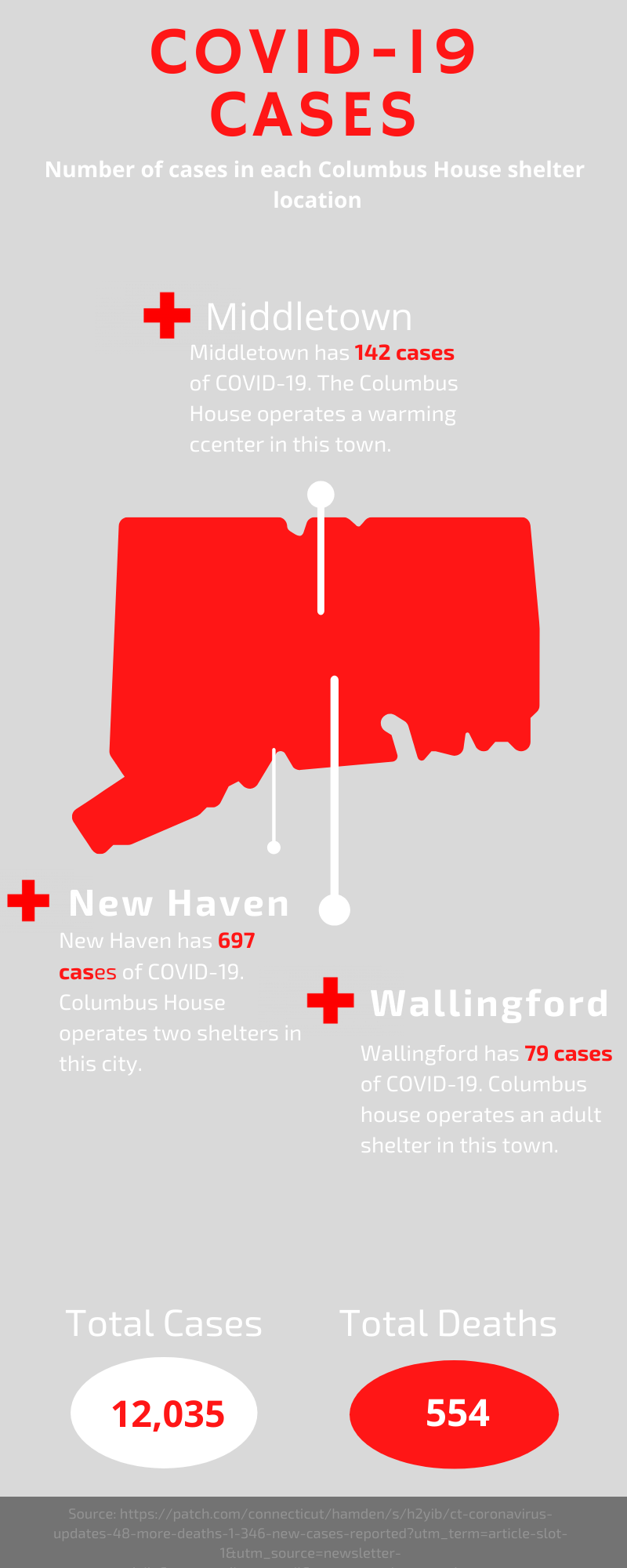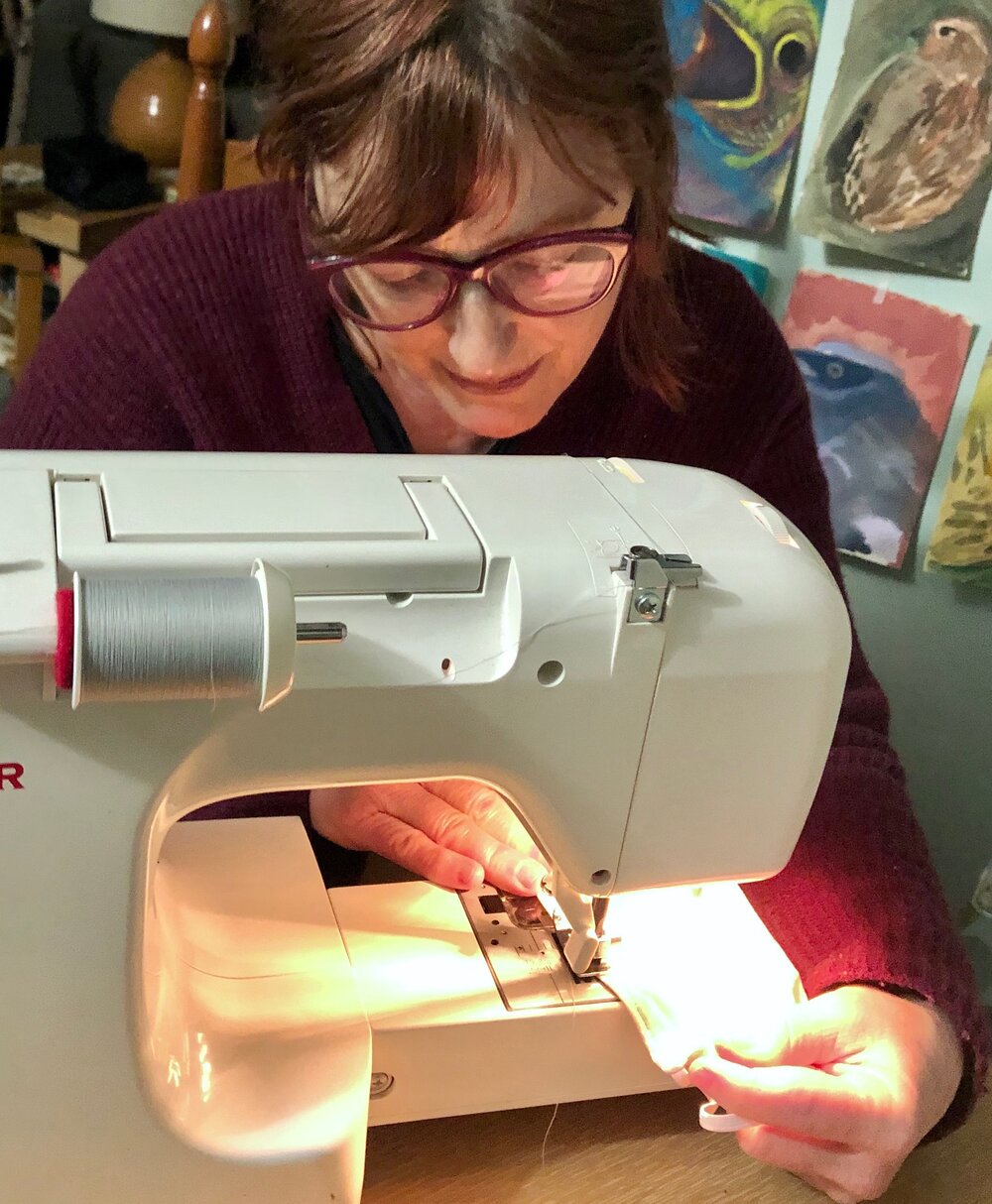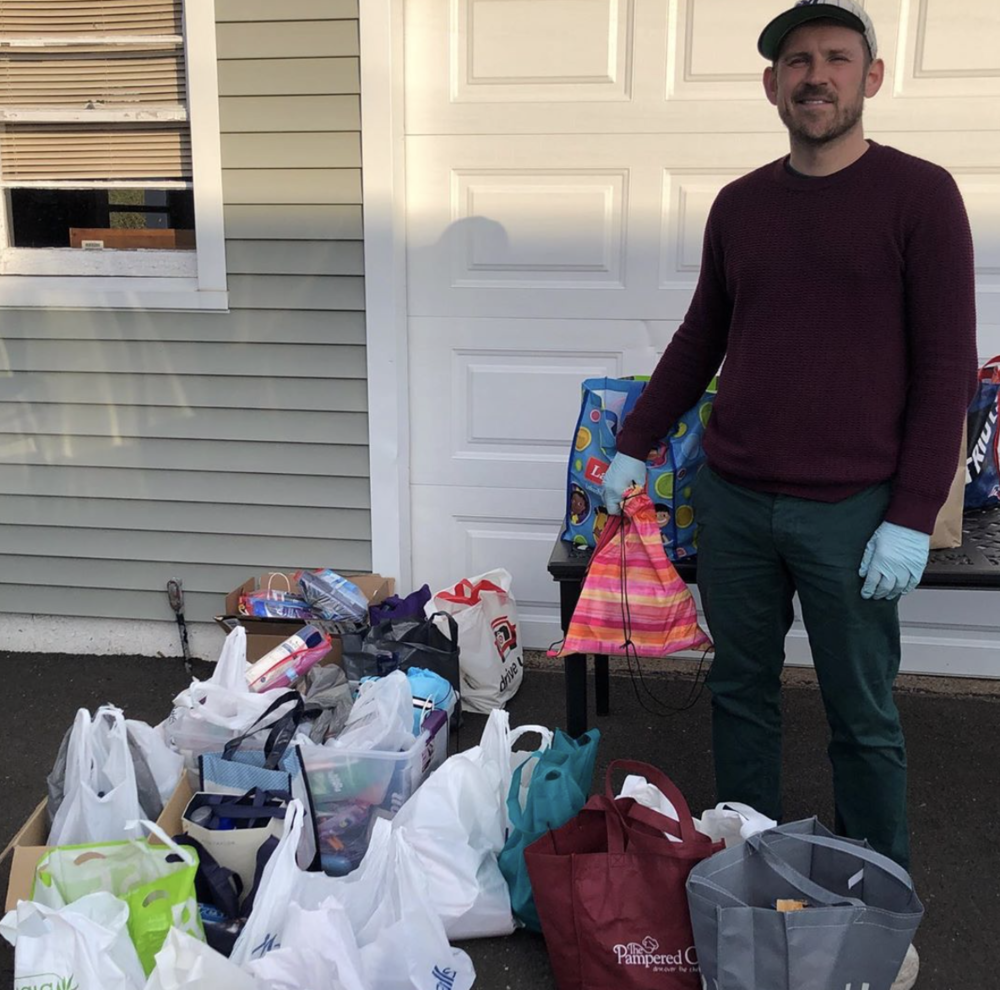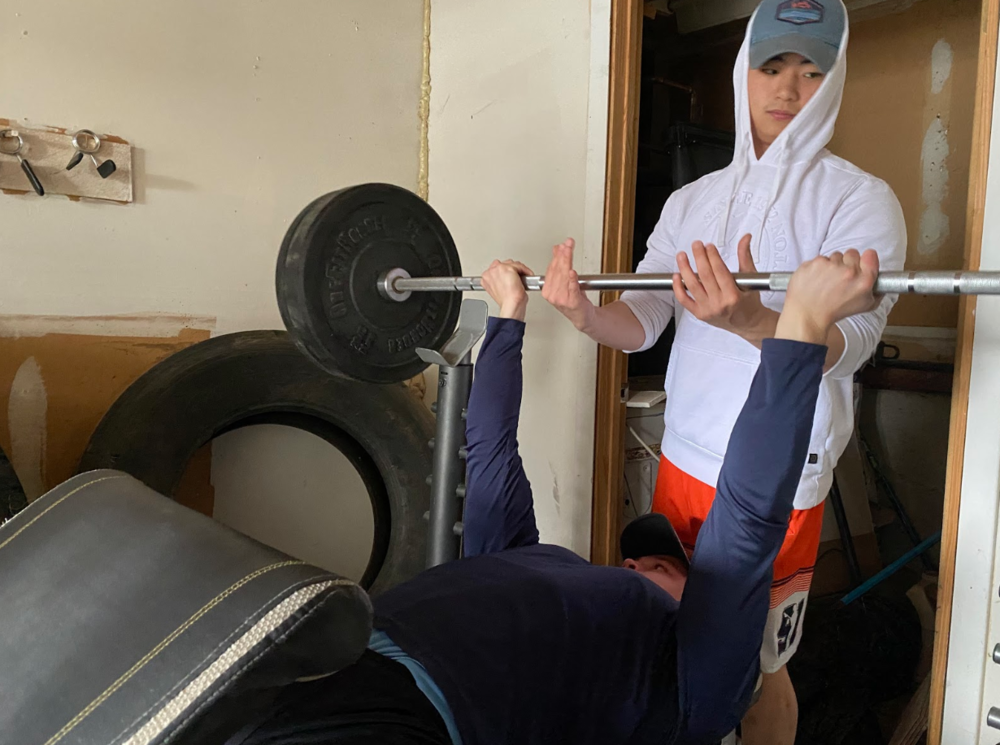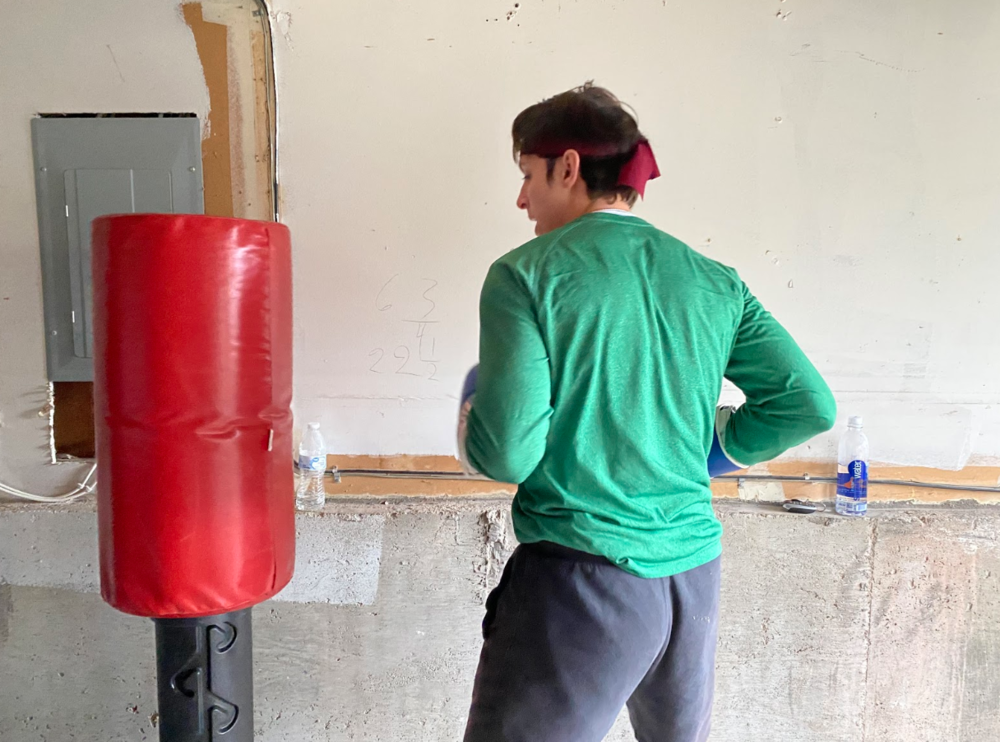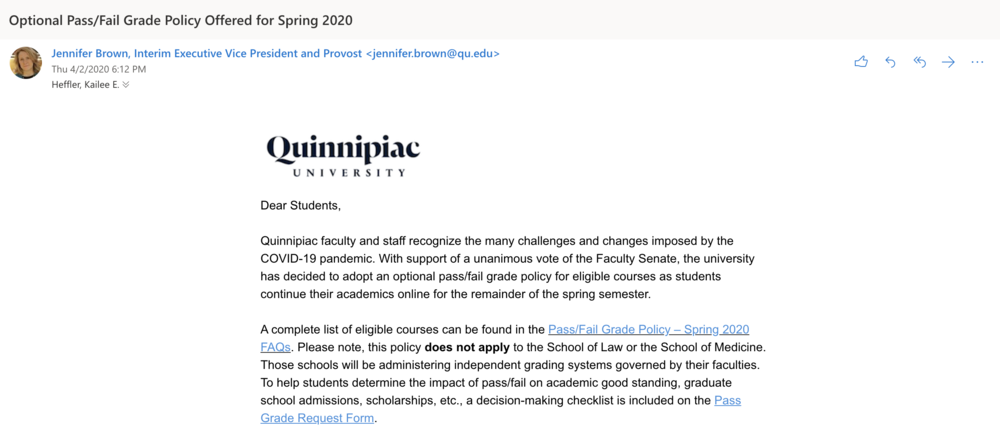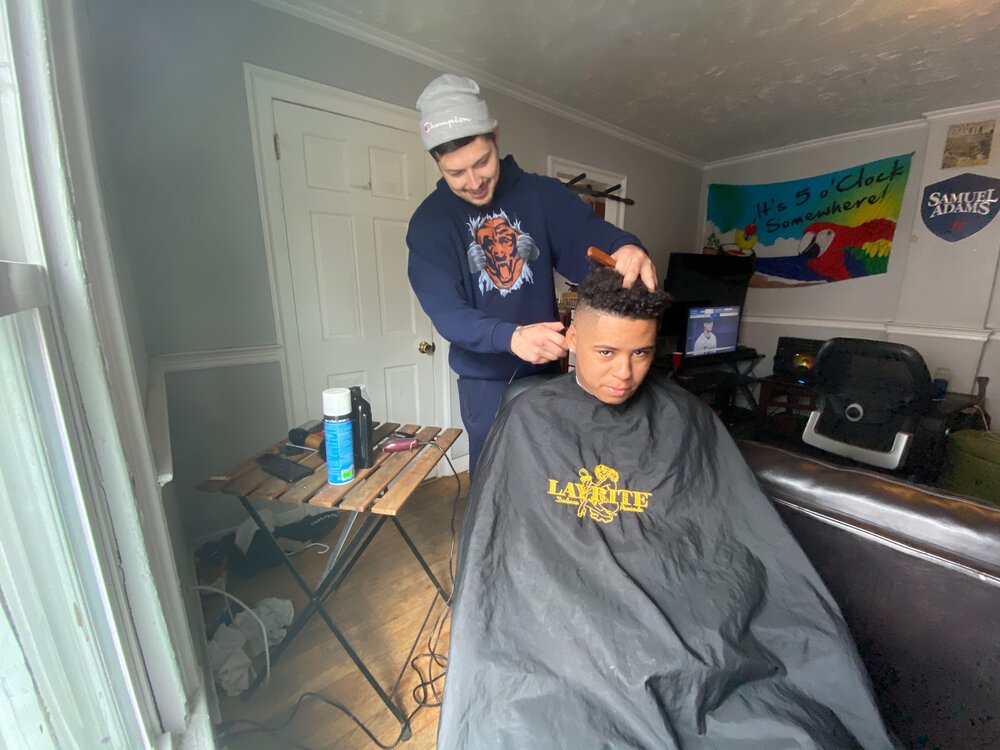The old normal
Katy McNicol stands outside of her house in Hamden every weekday morning with her thirteen-year-old daughter. It is a dark cold Thursday, with young students wrapped in scarves and coats. Students can be seen rushing down the sidewalks carrying backpacks to catch the bus at 7:25 a.m. The bus monitor steps off to ensure the children all get on. This scene is typical for many parents of young students, however, it soon may be changing.
Like many parents, McNicol works a full-time job and relies on the bus to bring her daughter to and from school. As an associate librarian at the Blackstone Library, her hours of work tend to be the same as her daughters.

Hamden High school. Credit: HQPress
“I’m able to have her take the bus and then go about my normal work day,” McNicol said. “It just works out well and everyone is where they need to be.”
Connecticut is one of just four states in America with an average school start time before 7:45 a.m. – the earliest in the country.
Across the United States, families and school administrators have been debating whether or not the start time for adolescents needs to be adjusted. California has moved all school district start times, with individual towns following.
In 2019, California became the first state to require middle and high school to start no earlier than 8:30 a.m. The state has since been closely monitoring the change, as the first year with the new policy is coming to an end.
The Boston School Committee voted three years ago to push back school start times, but the later times were not put into effect after many parents expressed issues with the changing schedule.
Parents within the town of Hamden and extending throughout Connecticut have begun discussing whether school districts need to change the times.
For many districts, considering moving the start time for school has been difficult, especially with many parents working until 5 p.m.
“I work full-time, and any change in me or my son’s schedule forces us to change everything. I really think parents just need to be more on top of having their kids go to sleep at a reasonable hour,” said Hamden parent Anna Meckler. “If that means lights out at 10 on a school night that’s what we need to do.”
Earlier this year, Guilford made the move to have school start at 8:30 a.m. which is fifteen minutes later than the district’s previous start time. Residents from the district said that they are happy with the change.
>
“It’s the difference between a granola bar and a home-cooked meal.”
For many, fifteen minutes may not be a lot, but for a parent of young children like McNicol, extra time in the morning is valuable.
“Everyone felt better in the morning,” said McNicol. “It made the morning less stressful, with my daughter being able to get ready faster. I could make sure everyone in the house was ready for the day. There’s less running around, and more time for things like breakfast.
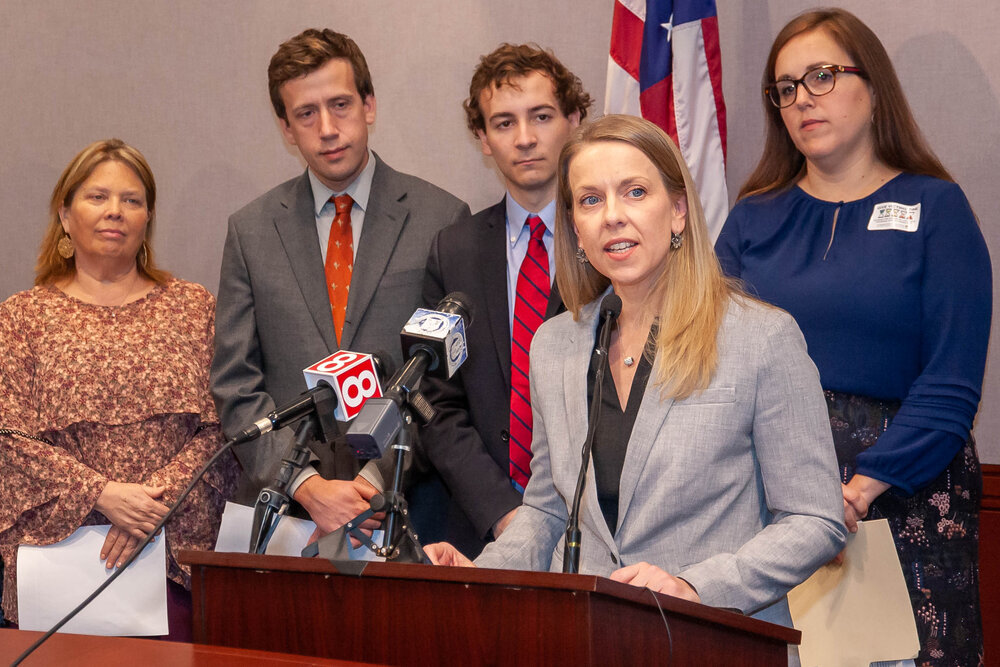
Senator Christine Cohen addressing the Education Committee. Credit: CT Dems
Senator Christine Cohen of Guilford testified earlier this month in front of the legislature’s Education Committee in support of House Bill 5217, which requires the state Department of Education to study the possibility of later school start times in Connecticut.
“As a former Board of Education member in Guilford, and as the mother of three school-aged children, I can tell you from firsthand experience that, yes, kids need their sleep if they are to perform well in school and if they are to maintain some sort of emotional and behavioral equilibrium throughout the day,” Cohen said. “I served on the Guilford Board of Education’s School Start Times Task Force. The science is there. The biology of adolescent sleep is well-known. Now all we need to do as a society is to recognize the benefit of later school start times and act on it. Change is always difficult, but our priorities must rest with the mental health and well-being of our youth.”
The bill requires the Commissioner of Education to establish a group to study issues relating to school start times. Some of the issues included are the effect of the start time of school instruction on child growth and development, and whether there is a correlation between school start times and educational outcomes in student productivity.
The group would include members who represent school boards, superintendents, teachers, administrators, and the parents of students. Findings from the group would be due by January 1, 2021.
The Education Committee has since passed the bill and a group is currently being put together.
The struggle for sleep
According to the American Academy of Pediatrics, teens are recommended to get 8 to 10 hours of sleep every night. The academy found that 59 percent of sixth to eighth-graders and 87 percent of high school students in the United States were getting less than the recommended 8.5 to 9.5 hours of sleep on school nights. High school seniors reported getting less than 7 hours each night.
“We just moved to Hamden from Guilford, where after years of trying to move times later, they finally were successful in doing so — by about 15 minutes. I’m all for going as late as possible,” said McNicol.
The study also states that enrollment and attendance improves and students are more likely to be on time when school starts. Parents and teachers report that teens are more alert in the morning and in better moods; they are less likely to feel depressed or need to visit the nurse or school counselor.
Dr. Elizabeth Lange, a pediatrician who worked with the American Academy of Pediatrics, believes that the change is necessary.
“There has been a continual trend in students not getting enough sleep,” said Lange. “Getting enough sleep during this time is crucial in terms of brain growth and function. We need school districts to consider how moving the time for homeroom will greatly impact students’ ability to succeed.”
Even mild sleep deprivation, meaning losing an hour or two on a regular basis, has been associated with significant health and educational concerns: increased risk for accidents and injuries, impaired learning, aggression, memory loss, poor self‐esteem, and changes in metabolism.

Hamden Board of Education meeting. Credit: Hamden Public Schools
For years, scientific studies have shown that starting school early does more harm than good. Evidence shows later school start times have a host of benefits for students, including higher graduation rates, lower truancy rates, and better mental and physical health.
The future for Hamden
The town of Hamden currently has no plans of changing the start time.
“While Hamden does not have any plans to change the start time, it is something that can be considered,” said Hamden Superintendent Jody Goeler. “ Given many schools switching and towns accommodating the change, we could reconsider. It is something that the community would need to realistically be able to adjust to.”
Members of the Hamden Board of Education shared similar reactions.
“I first got on the board in 1995 so the topic has come up a few times but not lately,” said Lynn Campo. “Sports and jobs usually have made a different high school start time impractical.”
However, the members have taken notice to neighboring districts like Guilford.
“As many other districts Hamden’s BOE has discussed this a few times over the past few years. We have been monitoring Gilford’s effort in implementing a change. It has been some time since this was discussed,” said Arturo Perez.
Looking forward, members of the community are waiting to see if other districts start to move forward in pushing the start time. School officials in Bridgeport, Cheshire, Ridgefield, Westport and West Hartford have held various levels of discussion about starting later.
“I also have an 11-month-old son, and maybe things will change for him,” said McNicol.
The pandemic
Since then, the coronavirus has paused all events until at least the beginning of May. The pandemic has forced schools across the United States to close for the rest of the academic year. Students are now expected to take online classes from inside their homes.
According to Education Week, nearly 55 million public schools have closed.
With the closure of schools, many students and parents have more flexibility in their schedules. Some however, are finding the extra time to be disruptive.
“It’s been a difficult transition for us,” said Meckler. “The classes are not being held, and students are just given work to complete everyday. Getting to bed has been a struggle since there’s no real start time for classes anymore. Children need more structure and unfortunately this situation doesn’t really allow a lot of that.”
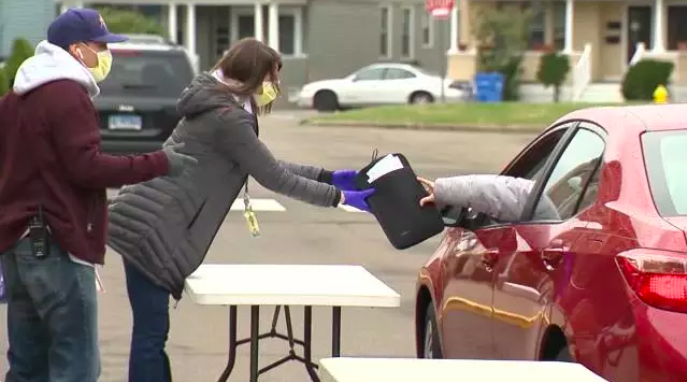
Hamden Public Schools distributing Chromebooks for students. Credit: Hamden Public Schools
While some districts chose to have live virtual classes, Hamden public schools are utilizing Google Classroom. The program allows teachers to create a page for their class with assignments, digital resources and assessments. The program takes attendance by recording when the student logs onto a classroom. Assignments are posted every morning by 9 a.m. with students completing them for the assigned due date.
For some families, following their old routines has proven to provide some normalcy.
“We’ve had to readjust our lives,” said Hamden parent Elizabeth Cadwell. “At first it was a little difficult, especially since the classes aren’t physically meeting anymore. My children have been sleeping in a little more, but we’ve been really trying to maintain the schedule that they’ve been following since August.”
Some parents however, are taking advantage of the change.
“My house has really enjoyed the virtual school experience,” said McNicol. “My kids can sleep longer, and school work is still being done. My daughter is finally able to have a healthy sleep schedule. It’s unfortunate that it took a global pandemic for it to happen.”




